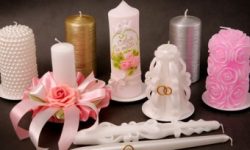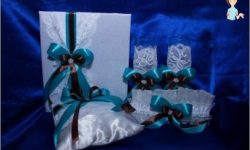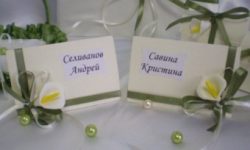Types of tea and their properties – what kind of tea is the most useful and tasty?
How many types of tea exists and what? Main types of tea – white, black, green, red – and their basic properties. Types of tea in the country of production, processing methods, additional additives – on Lady-Magazine.Com
Tea is the most common drink that drinks and adults and children. It affects health well, rejuvenates and helps to reduce weight. This excellent drink can drink like hot to warm up and cold – to cool. Tea classified by several types and varieties.
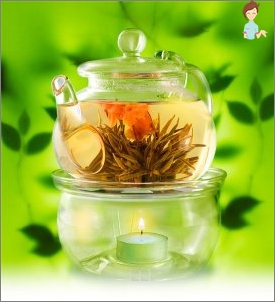
Tea Types – Black, Green, White, Red, Puer
- Black tea
It is very famous all over the world. This tea can be like with additives and without additives.
The feature of black tea is that it is exposed to complete oxidation. Oxidation tea can take place for two weeks, and then month.
Listers in dried form are brown or black.
When brewing tea may be orange and dark red. Sometimes black tea happens Tart taste.
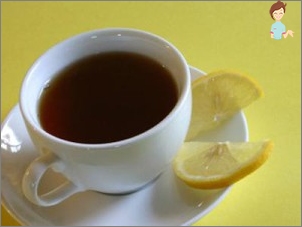
How black tea is used:
This wonderful tea can be used with sugar, without sugar, with a slice of lemon. And in black tea, you can add low-fat cream or milk.
- Green tea
Unlike black tea, green is not exposed to complete oxidation. Just torn tea leaves leave outdoors so that they lightly started. Then they are dried and twisted into small lumps. Thanks to this method, there is no strong fermentation of tea.
What is the useful green tea:
Green tea is very useful, it contains a lot of vitamin C, PP and groups in. Green tea raises mood, destroys bacteria, removes heavy metals from the body (lead, mercury, zinc) and even helps to fight cancer.
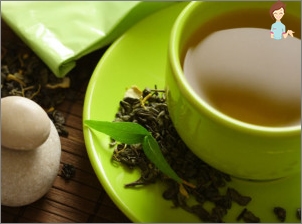
How to brew green tea:
In order to brew green tea, it is necessary to pour welding in a cup, pour boiled water. It is recommended that the water temperature does not exceed 90 degrees Celsius. You need to brew no more than five minutes. Tea gets yellowish green with a pleasant smell and soft taste. Green tea consumes mainly without sugar.
- White tea
White tea is exposed to even smaller fermentation than green. White tea is Tea kidneys, Which covered with a white pile.
This tea is collected at the beginning of spring, with people employed by the assembly of tea, it is not allowed to use onions, garlic and different spices to work not to spoil the fragrance of leaves. After gathered young leaves, they are brought and dried – first in the sun, then in the shadow. Then leaves put to dry in the oven. Then they are packaged.
The peculiarity of such tea is that it does not twist.
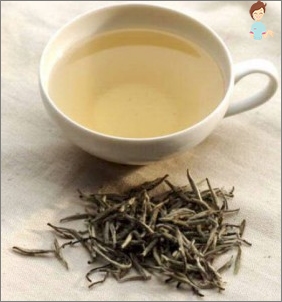
What is useful white tea
White tea, like green, has useful vitamins S, pp, in and many other beneficial substances. This tea is recommended to use those people who have been lowered immunity and torments chronic fatigue.
How to brew white tea:
White tea has a gentle and soft taste. To brew white tea it is better to choose porcelain dishes. Water should be clean, fresh and not brought to a boil. The water temperature should not exceed 85 degrees Celsius. 150 ml of water you need to take from 3 to 5 grams of leaves.
- Red tea
For red tea, the upper leaves are collected early in the morning. After the leaflets of the tea collected, they are dried, then they are laid out in the boxes and carry out fermentation 24 hours.
What is the helpful of red tea:
Like all kinds of tea, red tea is very useful for health – it increases immunity, it has a good adverse effect on the body. This drink contains a large number Potassium. Tea is recommended to drink those people who have reduced pressure.
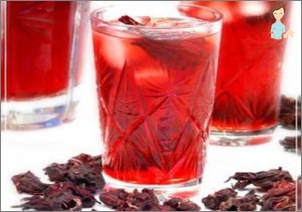
How to brew red tea:
To brew tea, you need to slightly boil the water – the temperature of boiled water should not exceed 90 degrees Celsius.
Then pour water into the cup where the welding is lying, and immediately drain her to remove the smell of dampness. After these actions again. Fill the cup with boiling water and cover with a towel cover. So that tea does not lose your taste, drain welding through the siter to another dishes.
After brewing, tea acquires dark red and unusual taste – it sometimes is even sweet.
- Puer
This drink came to us from Chinese provinces. Thanks to fermentation and storage features, tea acquires an unusual taste and smell. The more she has a shelf life, the one is becoming tastier.
Tea prepare for complex technology. First collect the leaves of a tea chinese plant, which is called «Camellia».
Tea leaves are necessarily treated with certain influences. With the help of added special bacteria tea is fermented. But that is not all. To make a real Puer, it is put in special pits with infusion for several years, then pressed into round or rectangular pellets.
What is useful Puer tea:
Puer is very good, so you can drink it Instead of coffee. This tea not only improves performance, but also Improves well-being, Reduces increased pressure, displays toxins. It is believed that Puer helps to remove extra kilograms.
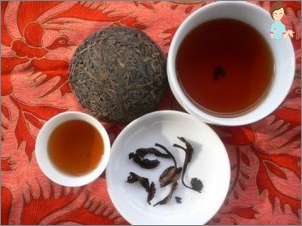
How to brew poer tea:
First, it is necessary to choose the dishes correctly – Glass, porcelain or clay. If you have chosen dishes from clay, you always turn into it only one kind of tea, as it is very absorbed by the smells.
Take the tea tile, separate a small piece from it – no more than three centimeters – and put in a custard.
For Puer, the water is enough just to heat, but do not boil, the temperature should not exceed 60 degrees Celsius. To brew tea for the first time, you need to wait all 30 seconds, And the rest of the welding can be merged immediately.
Puer tea acquires delightful red and unique taste.
The best types of tea by country – the largest manufacturers
- India
India – Major World Black Tea Manufacturer. There are many types of Indian tea, and the range is very diverse.
For example, in India produce leaf tea «Orthodox», and strong granulated tea (STS), which gives an unusual tart and strong taste. Also in India is made of green tea with a mild taste and aroma. - China
In such an amazing country, like China, produce unusual tea varieties with various tastes. China is the main exporter of green tea. It was here for the first time a tea tradition appeared, which later learned the whole world. All types of Chinese tea are unique and diverse. - Sri Lanka
Here they produce Ceylon varieties of black tea, but mostly, as in India, leaf tea «Orthodox» and granular tea STS. Nowadays the manufacturer supplies and black tea, and green. - Taiwan
In Taiwan, the tradition of growing tea came from China, but now this tea region is called independent. Here they produce unusual high-mountainous tea oolong with a pleasant taste and aroma, as well as black and green. - Japan
Japan is a major manufacturer of only green tea, but still the choice is varied. Japanese tea may differ taste and aroma. - Kenya
Kenya is the largest exporter and black tea maker of high quality. But the production of tea in Kenya recently took up, at the beginning of the twentieth century. Due to good conditions, the raw materials are considered environmentally friendly. Thanks to the right lean care of tea plantations, tea acquires a pleasant tart taste. - Indonesia
Indonesia is also considered the largest manufacturer of black leaf tea, as well as tea in granules and green. The ideal climate in this country creates excellent conditions for growing good quality tea – and, thanks to this, tea acquires a delicate taste.
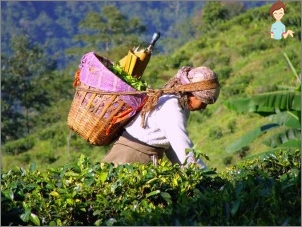
Types of tea by type of tea sheet and its processing
Solid grade
- Tipping tea (T) – Unpainted tea kidneys.
- Pekoya – Baich tea (P) – the youngest leaves. PEKOE is the collected leaflets on which there are vile.
- Orange (O) – Whole young twisted leaves. Orange – this name came from the Dynasty of the Princes Orange. Holland in the sixteenth century was the largest supplier of tea, and the most good and high-quality tea varieties went to the courtyard of the staff.
- Orange Peka (OR) – Orange Pekoe can not contain tea kidneys (tips). But still, Orange Peka with the addition of kidneys is considered very good and divided into categories:
- FOP (Flowery Orange Pekoe) – assembled sheets with tips (the most upper closer to the kidneys are going)
- GFOP (Golden Flowery Orange Pekoe) – great content of tips
- TGFOP (Tippy Golden Flowery Orange Pekoe) – Contains more Tips
- Ftgfop (Finest Tippy Golden Flowery Orange Pekoe) – very small amount of tea leaves and many tips
- SFTGFOP (SUPER FINE TIPPY GOLDEN FLOWERY ORANGE PEKOE) – more tips than in ftgfop
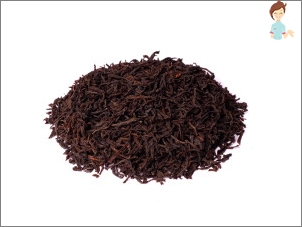
Medium grade tea
Medium grade tea – This is tea from broken leaves. Sometimes such leaves can be simply crushed, and can be waste in the process of making tea. But tea in this version is usually brewed faster and acquires a rich tart taste.
In the classification of medium-sized tea, the letter B (Broken – Broken) is added to the labeling of international quality:
- BP – Broken Pekoya
- Bop – Broken Orange Peka. Categories Broken Orange Peko:
- BFOP Broken Flowery Orange Pekoe)
- Bgfop (Broken Golden Flowery Orange Pekoe)
- Btgfop Broken Tippy Golden Flowery Orange Pekoe)
- Bftgfop (Broken Finest Tippy Golden Flowery Orange Pekoe)
- Bfopf – mid-range tea, letter F – small – cut tea
- Bftop – Sheet tea that contains a great content of tips
- BOP1 – Tea with long leaves
- BGOP – Tea from the best leaves
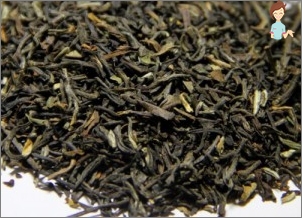
Chopped
Chopped or broken tea – these are waste production of various tea varieties or specially crushed tea leaves.
Classification of lower-grade chopped tea:
- Granulated tea (STS) – leaves after fermentation are placed in a car that crushes and twists them. Granulated tea has a richer strong and tart taste than other types.
- Packaged tea – It turns out of dust obtained as a result of the production of another type of tea. Crumbs or dust are placed in bags and packaged. Tea in bags is very quickly brewed, but it has less rich taste. Tea can be black or green, and sometimes – with taste additives.
- Brick tea – Pressed tea. Most often, it is made of the oldest leaves. Brick tea is black and green. Outdoor material should be at least 25%, and leaves – 75%.
- Tile tea – This tea is only black. Different from brick tea in that it is made of tea chips. First, it is a little roasted, then soared at a temperature of 100 degrees Celsius.
Soluble tea is a powder that does not need to brew. Tea just need to dissolve in water. It is convenient to take it on the road and work.
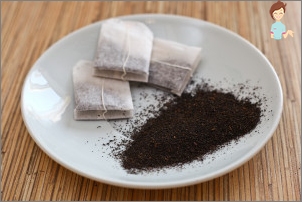
According to the degree of fermentation, tea happens:
- Fermented tea – This is a black tea that passes full fermentation (the degree of oxidation is up to 45%).
- Nonfermented – tea that is almost no oxidation (white and yellow). The degree of oxidation of tea reaches up to 12%.
- Halffermented – tea that is exposed to incomplete oxidation. For example, it can be green tea (fermentation degree from 12% to 35%).
If you like our article, and you have thoughts about this, share with us! It is very important for us to know your opinion!
